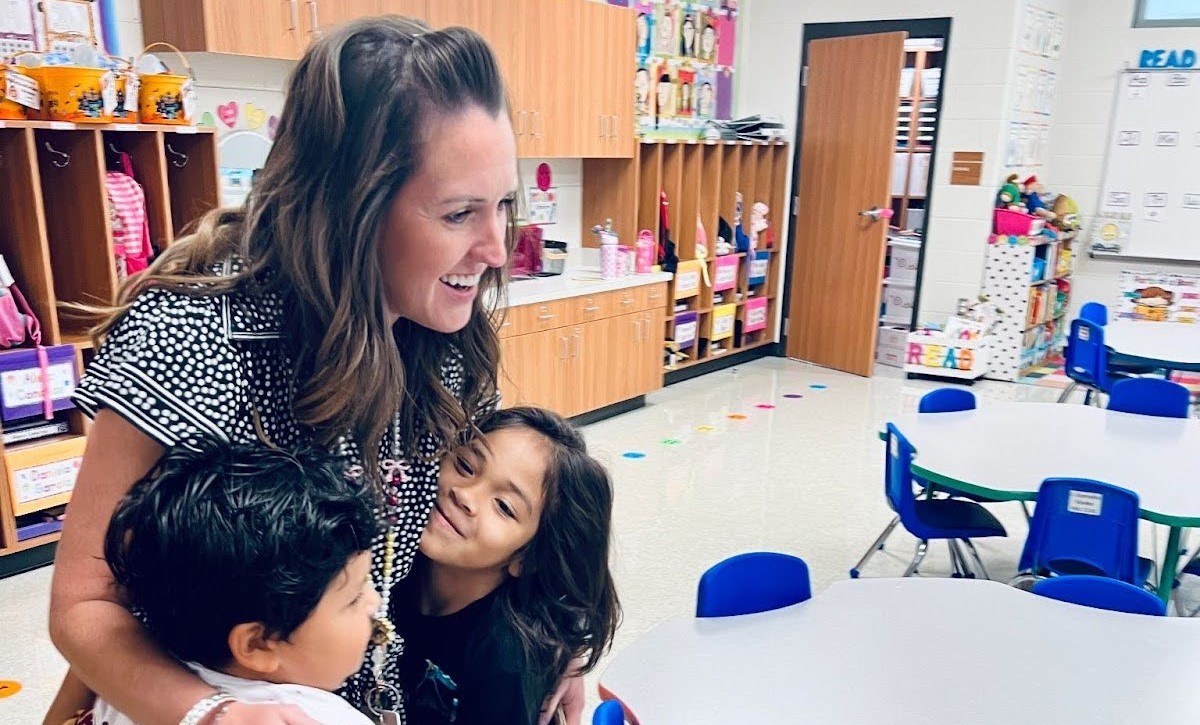How a Multi-layered Model of Leadership Is Driving Rapid Growth in Rural Texas
October 8, 2025

Everything in Principal Amanda Johnson’s life is full in the best way possible - her whiteboard, with notes on how to elevate instruction based on student needs, her mind with ideas for the next best effective coaching strategy, and her arms - with kids running to greet her when she walks the halls of her school, Ramirez-Burks Elementary. Her approachable leadership style paired with her high expectations has translated to measurable growth in student achievement for her rural Texas school in Cotulla Independent School District.
“We lead with purpose,” Johnson said. “Every decision is grounded in what’s best for students - and that means ensuring teachers have the support, resources, and collaboration they need to help every child succeed.”
A major element of support for Ramirez-Burks has been its implementation of NIET’s signature structure, the Instructional Leadership Team. Johnson’s Instructional Leadership Team meets weekly to monitor student progress and ensure it is offering tailored support to teachers schoolwide. Through these consistent meetings, Johnson and her team use classroom insights and data to directly inform instructional priorities and administrative decision-making.
The Instructional Leadership Team meetings work in tandem with professional learning committees, which are led by the school’s instructional coaches, to refine practices and align strategies across grade levels. This multi-layered unity of professional development and data-based decision-making is a game-changer for the school - and in turn, its students.
“These structures have directly supported measurable improvements in student outcomes by creating consistency, accountability, and targeted professional growth,” Johnson said. “Our teachers have become more confident in using data to drive instruction, and this has led to increases in student proficiency and engagement across grade levels.”
The effectiveness of these NIET-based strategies shows in the school data: From 2023-2024 to 2024-2025, Ramirez-Burks celebrated a 14-point increase in the Texas Accountability Ratings, a promising indicator that the momentum Johnson is building around teacher support and instructional development is building a stronger foundation for student success.
Johnson credits the growth in the state accountability scores to her school’s collaboration and focused leadership, but she knows the work is never done. She is most excited to expand the Instructional Coaching and Feedback Cycles this school year, providing teachers with consistent and targeted feedback. “I see these cycles driving ongoing success by helping teachers implement research-based strategies with fidelity, ultimately resulting in improved outcomes for every student,” she said. By connecting coaching cycles with leadership team efforts, Johnson creates a unified system where feedback and data directly inform instructional practices, leading to sustained, high-quality teaching across the school.
Based on the past year alone, data shows that Johnson’s multi-layered model of coaching and leadership is driving growth for her students. With the Instructional Leadership Team in place to align priorities and offer a foundation for deeper coaching and feedback cycles, Ramirez-Burks is transforming strategy into results - a trend Johnson is excited to continue as she serves.